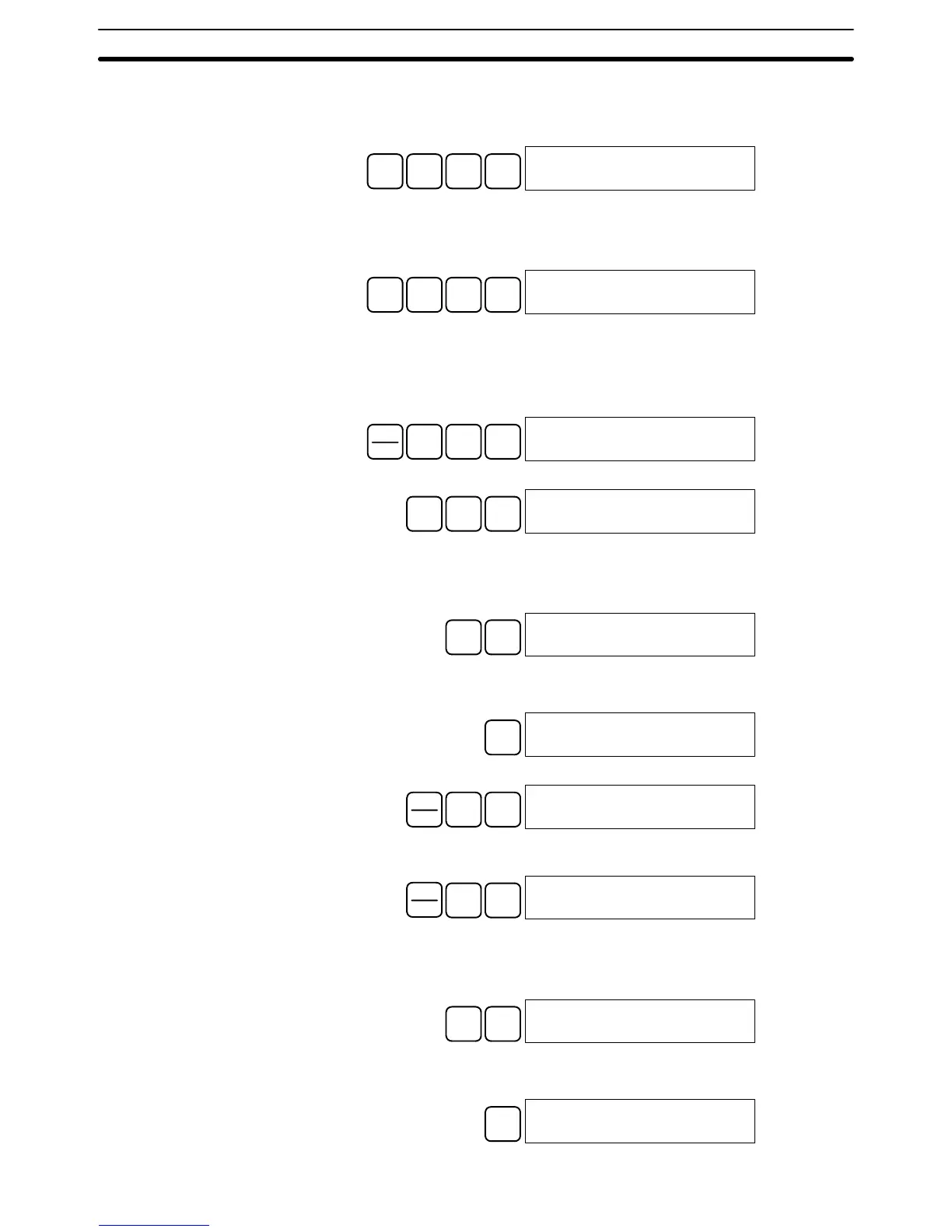3-6SectionProgramming Console Operations
95
• Writing the Word Number
10. Input the second operand and press the WRITE Key to write the instruction
to Program Memory. The next program address will be displayed.
LR
B
1
A
0
WRITE
00203READ
NOP (00)
Note When an instruction operand is input, the designation of bit or word
can be abbreviated.
11. Write the application instruction.
FUN
F
5
A
0
WRITE
00203 ADB DATA A
#0000
Note Decimal-number writing with or without sign cannot be executed by
the CQM1-CPU11-E/21-E.
• Writing a Decimal Number Without Sign
12. It is possible to write the operand in decimal (without sign).
CONT
#
SHIFT
TR
NOT
00203 ADB DATA A
#00000
13. Write the operand from 0 to 65535.
C
2
F
5 6
00203 ADB DATA A
#00256
Note If an erroneous input is made, press the CLR Key to restore the status
prior to the input. Then enter the correct input.
14. Restore the hexadecimal display.
SHIFT TR
00203 ADB DATA A
#0100
Note If an input is made outside of the permissible range, a buzzer will
sound and the hexadecimal display will not be displayed.
WRITE
00203 ADB DATA B
000
15. It is possible to write the operand in decimal (with sign).
CONT
#
SHIFT
TR
00203 ADB DATA A
#+00000
16. Write a value from –32,768 to 32,767. Use the SET Key to input a positive
number, and use the RESET Key to input a negative number.
REC
RESET
B
1
A
0
00203 ADB DATA A
#-00010
Note If an erroneous input is made, press the CLR Key to restore the status
prior to the input. Then enter the correct input.
17. Restore the hexadecimal display.
SHIFT TR
00203 ADB DATA B
#FFF6
Note If an input is made outside of the permissible range, a buzzer will
sound and the hexadecimal display will not be displayed.
WRITE
00203 ADB DATA C
000
